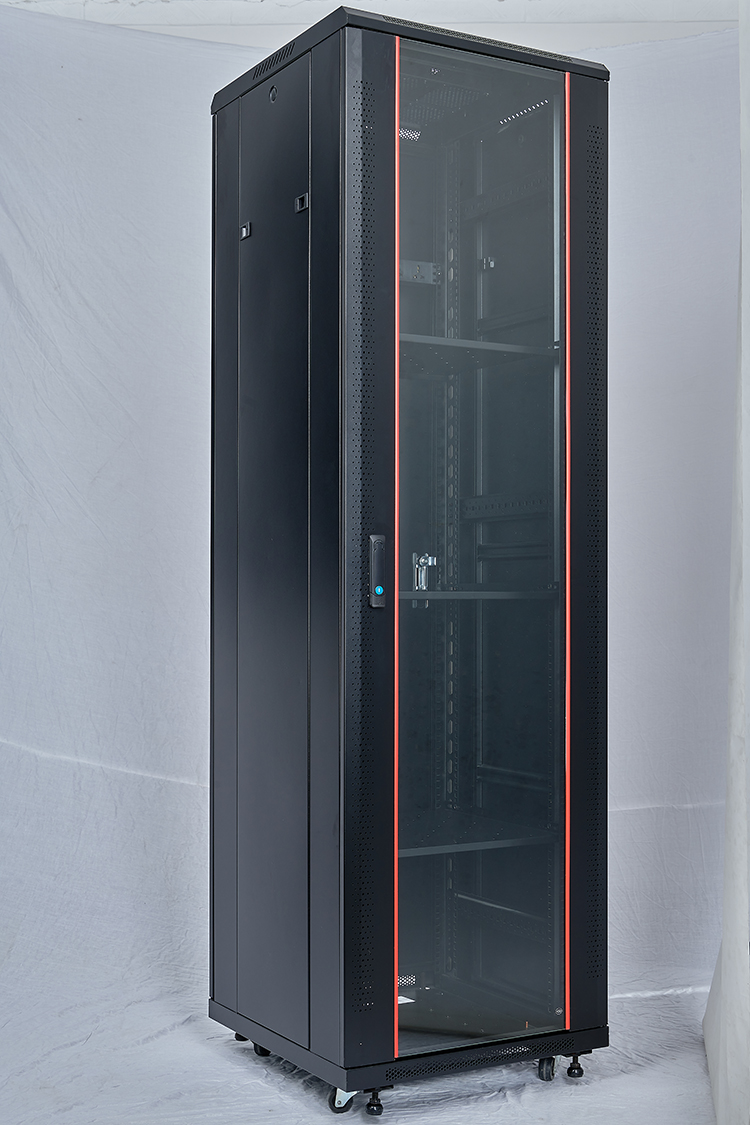
Network rack cabinets are essential for organizing and securing IT equipment in modern infrastructure. Their structured design streamlines cable management, protects hardware, and optimizes space, making them critical in environments from small offices to large data centers. This guide explores their features, types, uses, and best practices for effective deployment.
Key Features of Network Rack Cabinets
The functionality of network rack cabinets stems from carefully engineered features. Most adhere to the 19-inch width standard, a global benchmark ensuring compatibility with servers, switches, and patch panels. Height is measured in rack units (U), where 1U equals 1.75 inches, with common sizes ranging from 6U to 42U to fit varying equipment volumes.
Durability is a core trait, with materials like cold-rolled steel offering strength to support heavy loads—often up to 1,000 pounds for floor-mounted models. Ventilation systems, including perforated doors and built-in fan mounts, prevent overheating by maintaining airflow around heat-generating components like power supplies and processors.
Security features include lockable front and rear doors, side panels, and sometimes keypad access to restrict unauthorized entry. Cable management elements such as vertical ducts, cable rings, and tie-down points reduce tangling, simplify troubleshooting, and improve airflow.
Types of Network Rack Cabinets
Floor-Standing Cabinets
These free-standing units are ideal for large-scale setups. With heights from 24U to 42U, they accommodate multiple servers, switches, and PDUs (power distribution units). Adjustable feet or casters enhance stability, while some models include side panels that can be removed for easy access during installation.
Wall-Mounted Cabinets
Compact and space-saving, wall-mounted cabinets range from 6U to 18U. They are perfect for small offices or telecom closets where floor space is limited, housing routers, modems, and small switches. Their low profile and secure mounting prevent tipping and save valuable square footage.
Open-Frame Racks
Open-frame designs lack enclosing panels, prioritizing maximum airflow and accessibility. They are commonly used in controlled environments like server rooms, where equipment requires constant monitoring or frequent reconfiguration. Their lightweight structure makes them easy to assemble and adjust.
Outdoor/Weatherproof Cabinets
Built to withstand harsh conditions, these cabinets feature sealed doors, corrosion-resistant coatings, and thermal insulation. They protect equipment in outdoor locations such as telecom towers or industrial yards, shielding against rain, dust, extreme temperatures, and humidity.
Applications Across Industries
Corporate Offices
In office settings, network rack cabinets organize routers, switches, and VoIP systems, ensuring reliable connectivity for employees. Wall-mounted units in utility closets keep equipment out of sight while maintaining easy access for IT staff.
Data Centers
Large floor-standing cabinets form the backbone of data centers, housing rows of servers and storage systems. Their robust build supports heavy loads, while integrated cable management keeps thousands of connections organized and traceable.
Education Institutions
Schools and universities use network rack cabinets to manage campus-wide networks, connecting classrooms, labs, and administrative offices. Secure designs protect against tampering, ensuring uninterrupted access to educational resources.
Healthcare Facilities
In hospitals, these cabinets secure critical systems like patient monitoring devices and electronic health record servers. Lockable features and organized cabling minimize downtime, supporting reliable healthcare services.
Installation and Maintenance Tips
Placement: Install cabinets in cool, dry areas away from direct sunlight and water sources. Allow at least 36 inches of clearance around units for airflow and maintenance access.
Equipment Mounting: Use rail kits to secure devices, distributing weight evenly. Mount heavier items (like servers) at the bottom to lower the center of gravity and prevent tipping.
Cable Management: Route cables through designated ducts and use labels to identify connections. This reduces clutter, speeds up troubleshooting, and prevents accidental disconnections.
Regular Checks: Inspect cabinet locks, hinges, and ventilation systems quarterly. Clean dust from fans and filters to maintain airflow, and tighten loose screws to ensure stability.


